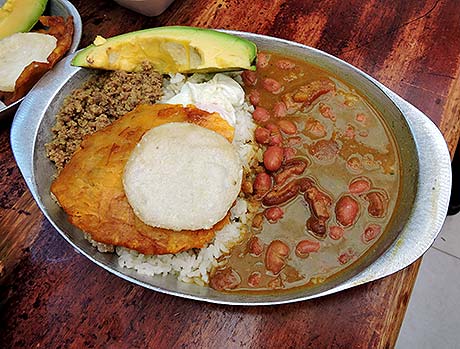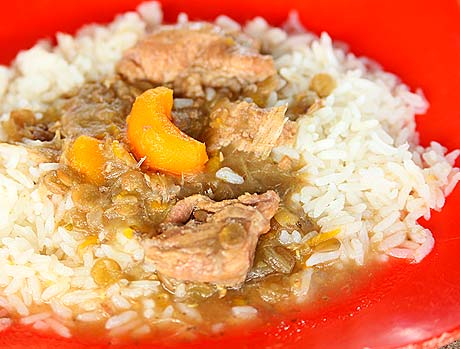
When we think of Colombia, the first thing that might come to mind is a big, hearty bandeja paisa or a delicious ajiaco. And Venezuela? Arepas with dozens of different fillings is the immediate answer. Peru? Ceviche. Mexico? Tacos. Argentina? Asado. El Salvador? Pupusas. We could spend hours listing the varied and tasty dishes that identify each of our countries in Latin America where we have so many ingredients in common.
Food brings us together. Our mouths water for a dish that is part of our gastronomic tradition and our history. Our favorite foods taste like family, togetherness, childhood and friends. They are dishes that have been on our palate for generations.
But what if that was no longer so?
The Food and Agriculture Organization of the United Nations (FAO) warns that "agri-food systems remain highly vulnerable to shocks and disruptions arising from conflict, climate variability and extremes, and economic contraction."
The projection patterns of precipitation changes, the possible temperature rise by at least 2.5° and the intensification of climatic events could affect crops and harvests, bring new pests, influence land conflicts, and impact the productivity of our fields and the price and consumption of our food.
In June 2023, the World Bank called for "urgent action to combat all forms of malnutrition, including climate-smart measures.” The international organization Action Against Hunger proposes agroecology, agroforestry or even hydroponics to "implement the right to food, providing new foundations for a sustainable food system, resilient agriculture and good nutrition.”
We are not talking about the distant future. Action Against Hunger states that "climate change is already having a major impact on the food security and livelihoods of a large number of smallholder farmers. It acts as an aggravating factor in areas that are already extremely vulnerable and can exacerbate tensions between communities when access to natural resources is a matter of survival."
Climate change could affect our food security, cause hunger and, along the way, affect our culinary heritage, which is no less important if we consider that it is part of our identity.
The products of the land and local cuisines share both their uniqueness and a complexity that derives from referring, simultaneously, to living practices and techniques, on the one hand, and to identities, emotional ties and specific taste preferences on the other," says Professor Xavier Medina, from the Universitat Oberta de Catalunya (Open University of Catalonia, UOC).
It's no wonder that a little over a decade ago, the United Nations Educational, Scientific and Cultural Organization (UNESCO) began to incorporate culinary proposals as Intangible Cultural Heritage. "Its safeguarding affects the communities and collectives that sustain this heritage; ways of life and social organization; the permanence of many individuals in their places of origin; threatened ecosystems and natural spaces with a high heritage value; and the genetic and cultural diversity of food," Medina says.
If rice or corn production collapsed in Venezuela, if bean production was affected in Colombia, if fewer vegetables were harvested in Bolivia, or if in Panama the decrease in farm labor led to greater imports and higher prices, that would not only represent a danger to our ability to feed ourselves but a risk to preserving our culture.
This is the menu of our favorite endangered foods.







